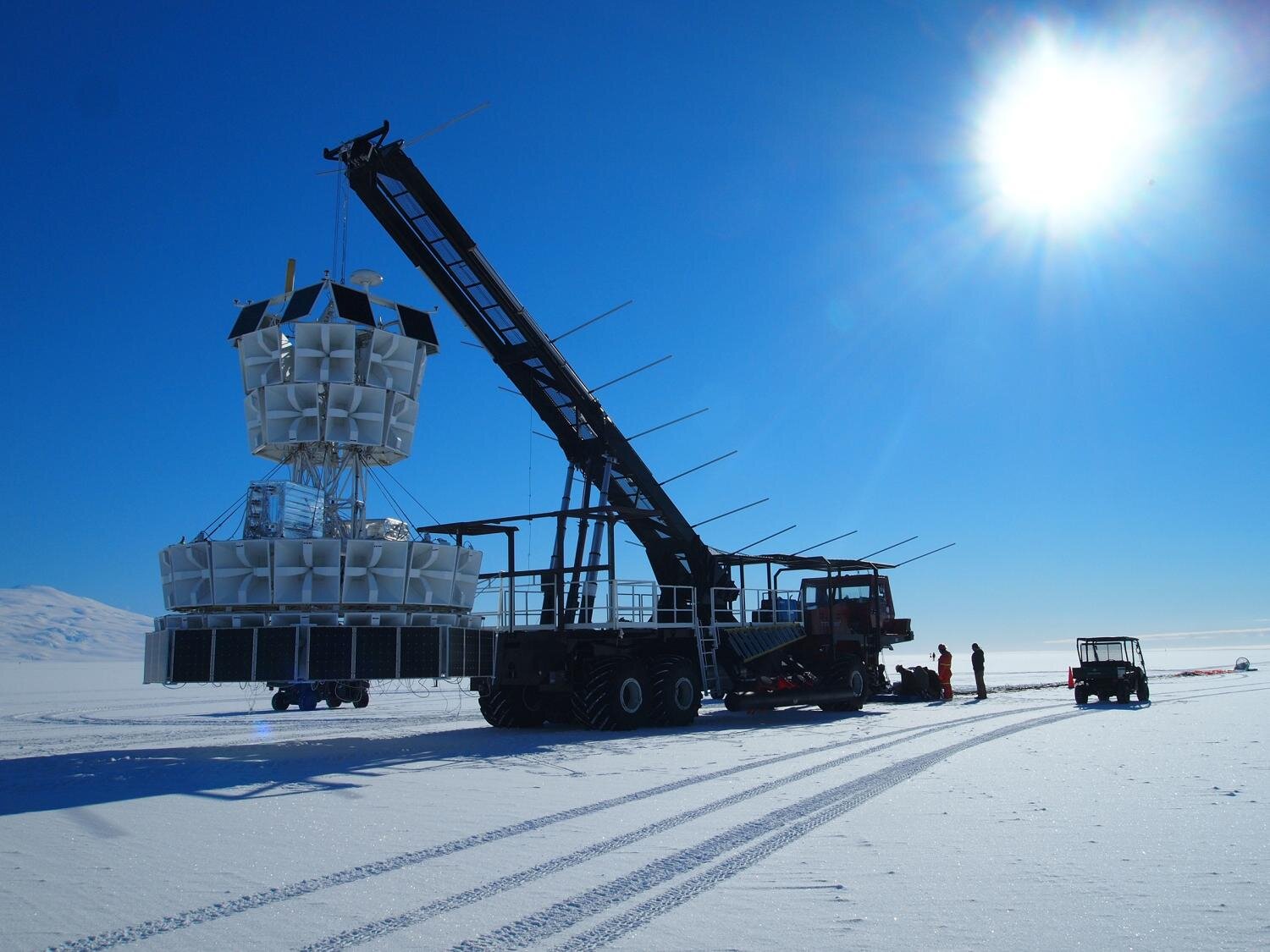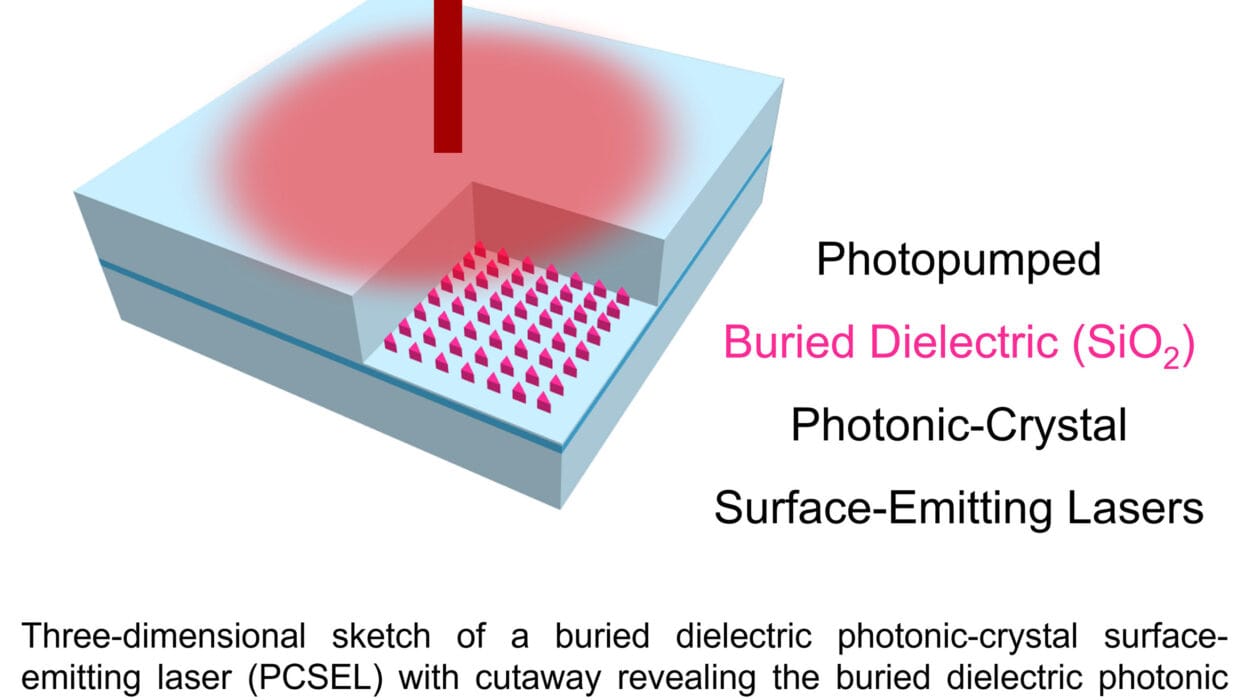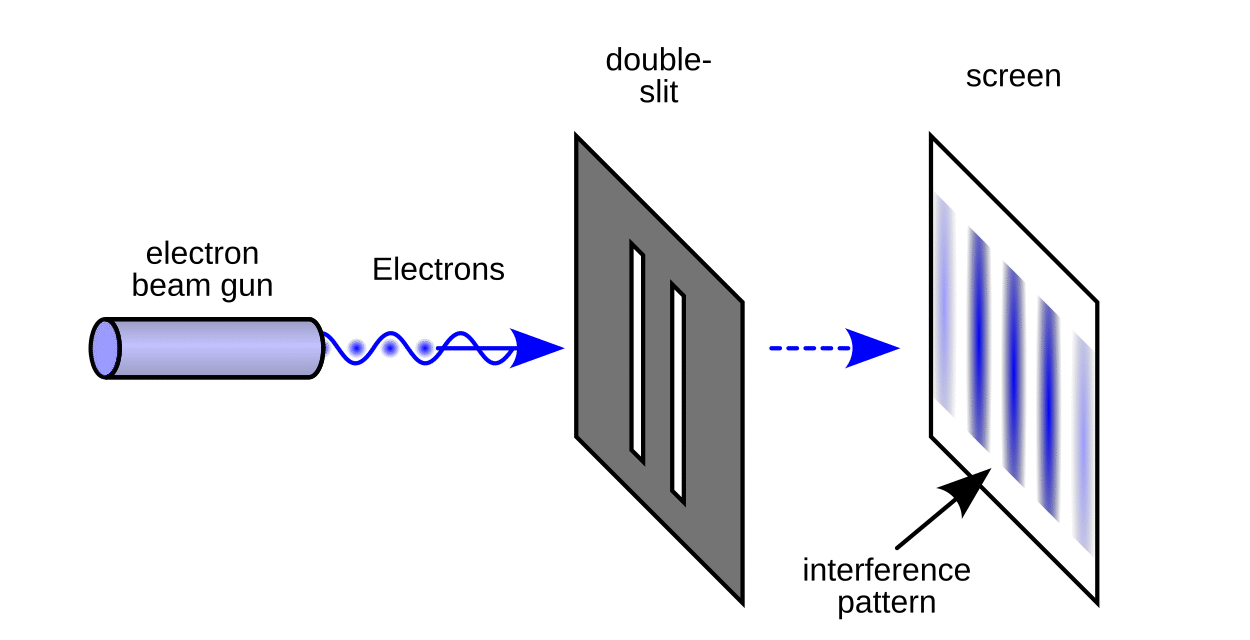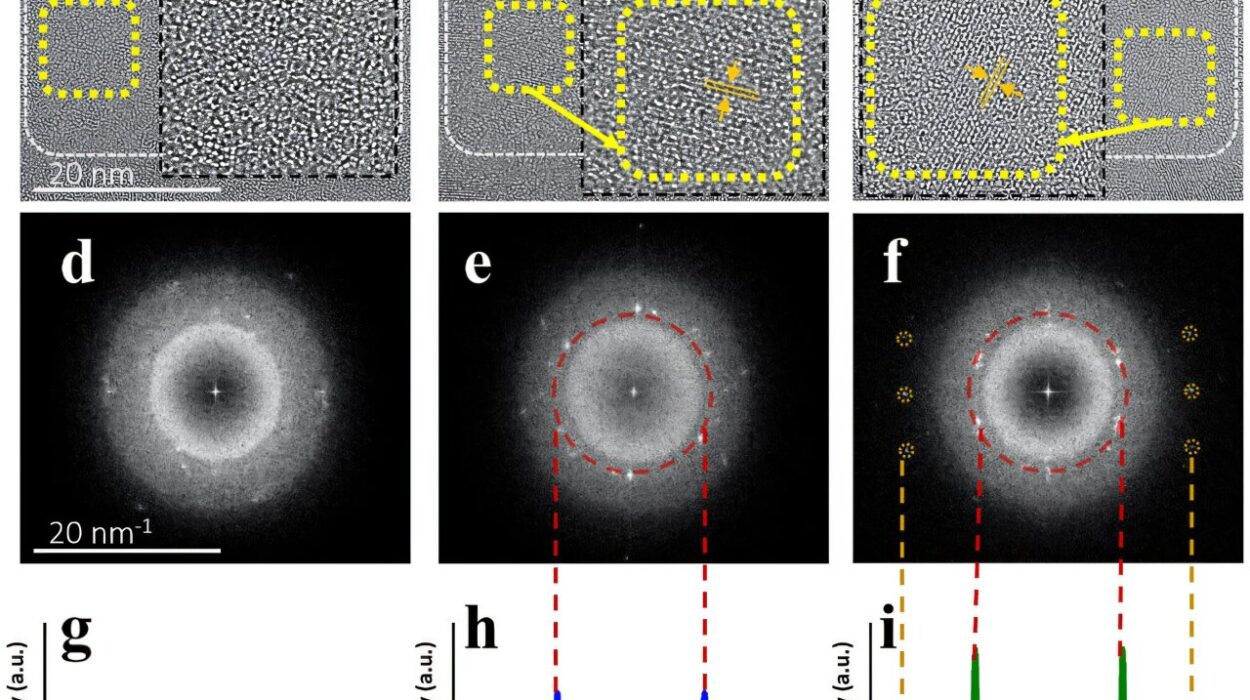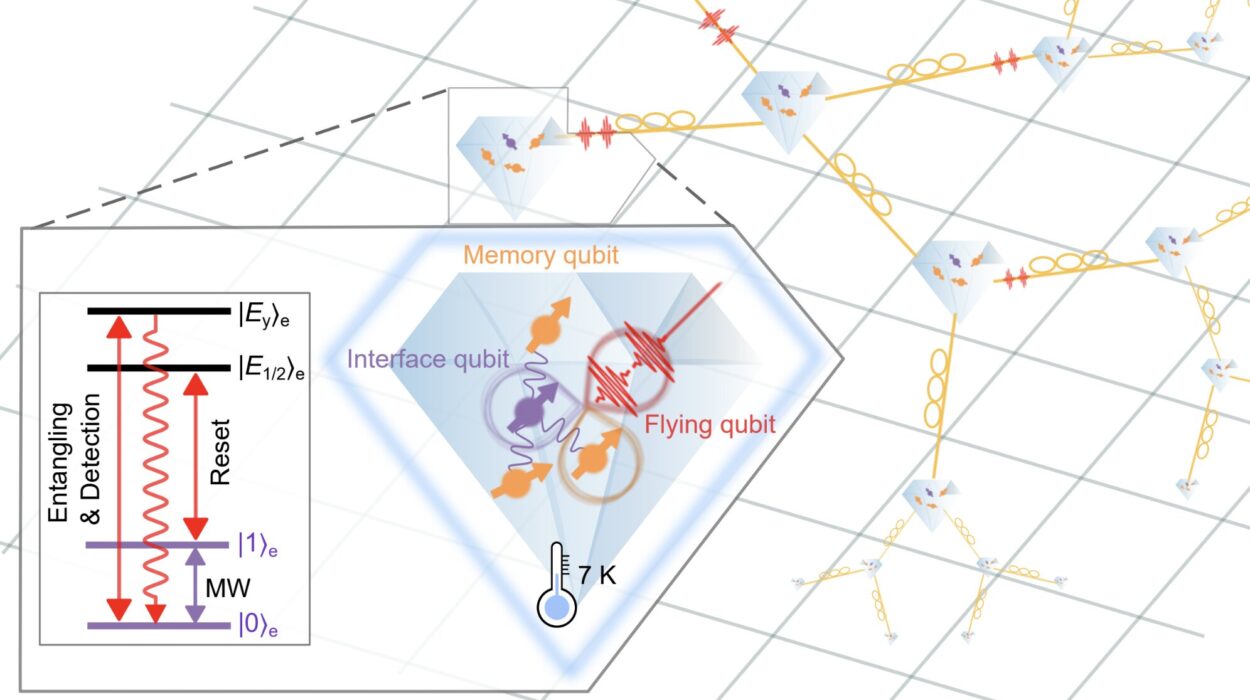High above the vast, white wilderness of Antarctica, where the air is thin and Earth feels closest to space, a strange whisper from the cosmos was caught drifting upward—from beneath the ice.
This bizarre signal didn’t behave like anything known to science. It pierced the ice from below at a steep angle, climbed through thousands of kilometers of solid rock, and rang out to a sensitive array of instruments suspended on a NASA high-altitude balloon. This balloon, part of the Antarctic Impulsive Transient Antenna (ANITA) experiment, wasn’t even designed to hear such a thing. But it did.
Now, scientists are scratching their heads.
“It’s an interesting problem because we still don’t have an explanation,” said Stephanie Wissel, associate professor of physics, astronomy and astrophysics at Penn State and a member of the ANITA collaboration. “These signals aren’t what we expect from known particles. But they’re real.”
The findings, recently published in Physical Review Letters, add a twist of cosmic intrigue to one of physics’ biggest mysteries—and may offer a tantalizing glimpse into realms of the universe we’ve only begun to imagine.
Hunting Ghost Particles in the Deep Freeze
The ANITA project is no ordinary telescope. It listens for radio waves, not visible light. These radio emissions are produced when high-energy cosmic particles called neutrinos collide with atoms in the Earth’s atmosphere or icy crust, releasing faint flashes of energy like miniature thunderclaps in the vacuum of space.
The concept is simple, in theory. Neutrinos are elusive subatomic particles with no charge and barely any mass. They rarely interact with anything. In fact, trillions pass through your body every second—and you never feel a thing. But when they do collide with something, the resulting cascade of particles can emit detectable radio waves.
ANITA’s mission is to float 40 kilometers above Antarctica, scanning the ice for these fleeting signals—what physicists call “ice showers” and “air showers.” The pristine Antarctic landscape provides an ideal lab: free from human interference, rich in solid ice, and distant from any noisy civilization that might distort the data.
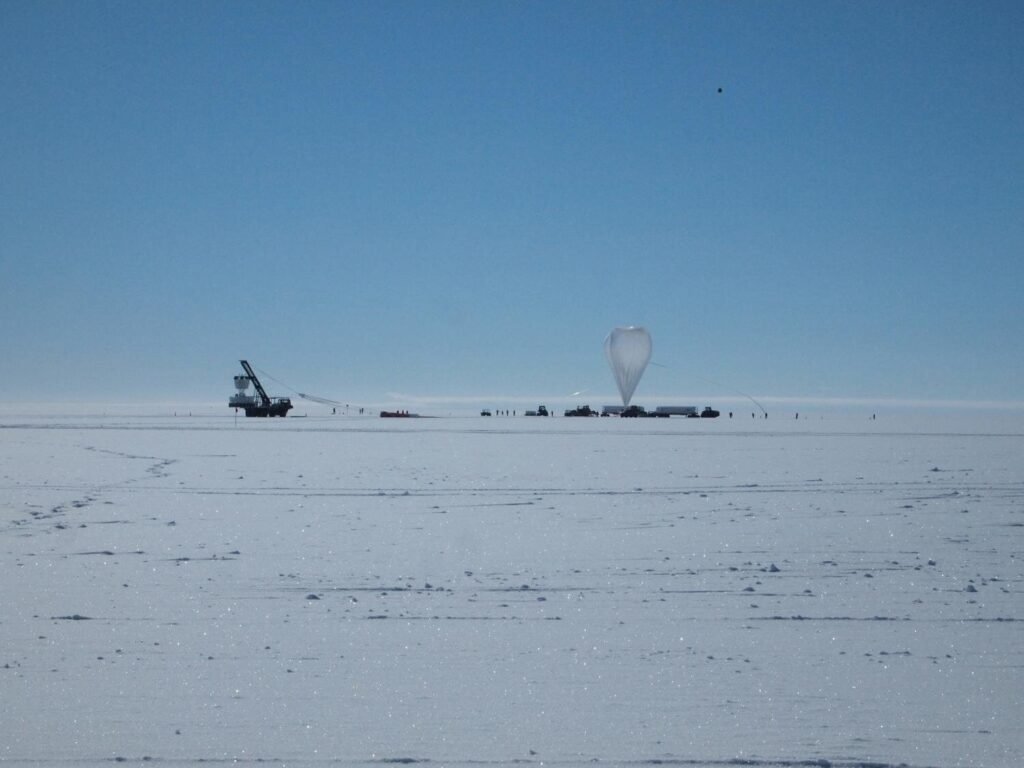
“It’s like flying a radio ear over a silent, frozen ocean,” said Wissel. “We’re listening for whispers from particles that were born in distant supernovas, black holes, or even from the early universe.”
The Signal That Shouldn’t Exist
But something about these new signals was off.
Instead of detecting neutrino signals bouncing up from within the ice, the antennas picked up radio waves coming from well below the surface—at steep, upward angles, nearly 30 degrees from below the horizon.
The problem? According to every known law of physics, that shouldn’t happen.
A particle producing such a signal would have had to pass through thousands of kilometers of dense rock—something neutrinos can sometimes do, but not in this way. The signal should have been absorbed or deflected. And yet, it arrived—clean, loud, and unaccounted for.
Wissel explained that while neutrinos are known to ghost through matter, this kind of trajectory didn’t match any known neutrino behavior. “We’re confident it’s not a neutrino,” she said. “And that’s what makes it so fascinating.”
Peering into the Unknown
To decode the mystery, researchers turned to other global neutrino observatories. They cross-referenced the data with information from IceCube, a massive detector embedded in the Antarctic ice itself, and the Pierre Auger Observatory in Argentina, another cosmic-ray facility.
Neither of those facilities saw anything similar.
That made the signal even more mysterious. It wasn’t a false alarm. It wasn’t noise. It was, as Wissel described it, “anomalous”—a scientific code word for “we have no idea.”
“There are theories out there,” she said. “Some suggest exotic particles or new physics beyond the Standard Model. Others speculate about interactions with dark matter. But we haven’t found a clear match for any of those ideas yet.”
The Standard Model of particle physics is the reigning theory that explains how all known particles interact. But it doesn’t explain everything. Dark matter, for instance—believed to make up a vast portion of the universe—is invisible and undetected by traditional means. And strange signals like these could be the first signs of new, hidden realms.
Building the Next-Generation Detector
At Penn State, Wissel and her team have spent nearly a decade refining detectors to listen more closely for these rare events. One small ping from a neutrino could carry messages from the edge of the known universe—ancient signals that traveled for billions of years, untouched and undisturbed.
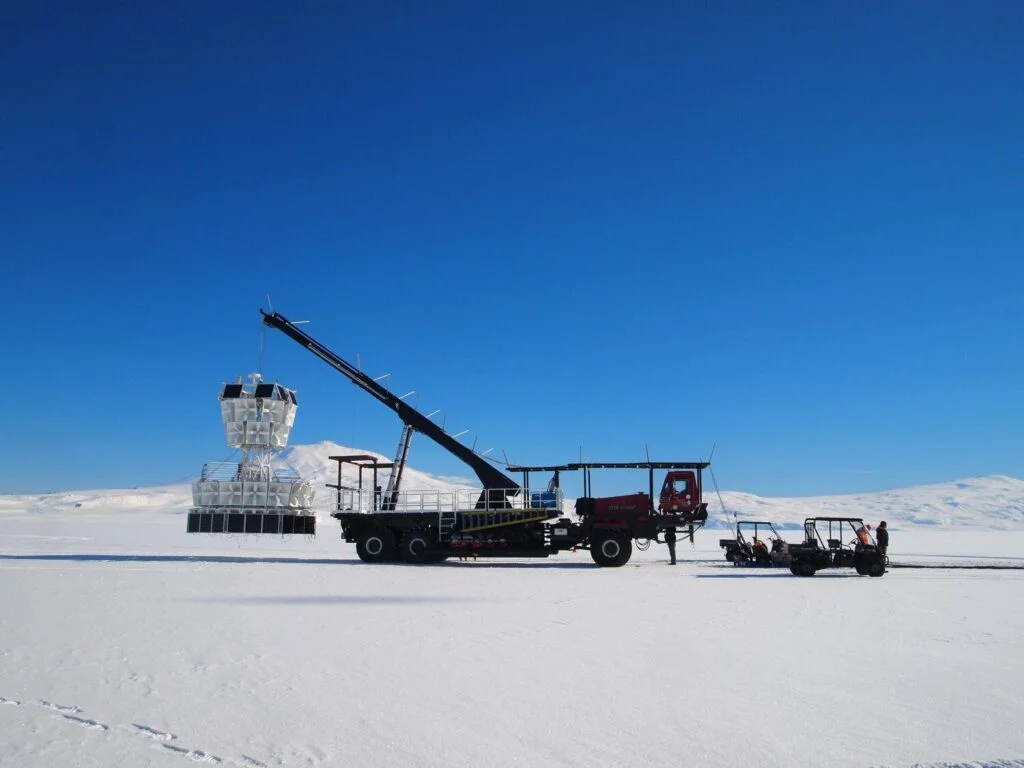
To find more of them, the team is now building PUEO—the Payload for Ultrahigh Energy Observations—a new detector with more sensitivity and sharper hearing than ANITA. If ANITA was a listening ear, PUEO will be a concert hall tuned to the deepest notes of the cosmos.
“My hope is that with PUEO, we’ll be able to pick up more anomalies and finally figure out what they are,” Wissel said. “Or maybe even detect actual neutrinos, which would be even more exciting.”
With PUEO, they aim to fly again over Antarctica, listening with greater precision and a better signal-to-noise ratio. If more strange signals emerge—and if they follow similar patterns—it could confirm that we’re on the brink of discovering something entirely new.
A Cosmic Puzzle with Earthly Roots
The Antarctic ice has always held secrets—from preserved meteorites to buried climate records. But this new puzzle stretches far beyond our frozen planet. It touches the fundamental fabric of the universe.
Are these signals clues about dark matter? Are they signs of an undiscovered particle? Or are they revealing something completely unexpected about how physics behaves near the icy edge of the world?
“I suspect there’s a radio propagation effect near the ice or horizon that we don’t yet understand,” Wissel said. “But we’ve looked at several of those possibilities, and none have provided an answer.”
In science, questions like these are not roadblocks—they’re gateways. Each unanswered anomaly opens a door to new research, new collaborations, and new technologies. They’re invitations to wonder.
“This is what makes science beautiful,” Wissel said. “We ask questions, we chase shadows, and sometimes we stumble across something extraordinary. We’re explorers—but our map isn’t finished yet.”
The Sky Isn’t the Limit
In the coming years, as PUEO launches into the stratosphere and other detectors fine-tune their sensitivity, we may finally learn what these ghostly signals are trying to tell us.
Perhaps they are echoes of the earliest moments of the universe. Perhaps they are signs of hidden dimensions. Or maybe, they’re just the universe reminding us how much we still don’t know.
But one thing is certain: in the most remote corner of our planet, scientists are hearing whispers from the cosmos—and the story they’re telling is only just beginning.
Reference: A. Abdul Halim et al, Search for the Anomalous Events Detected by ANITA Using the Pierre Auger Observatory, Physical Review Letters (2025). DOI: 10.1103/PhysRevLett.134.121003
